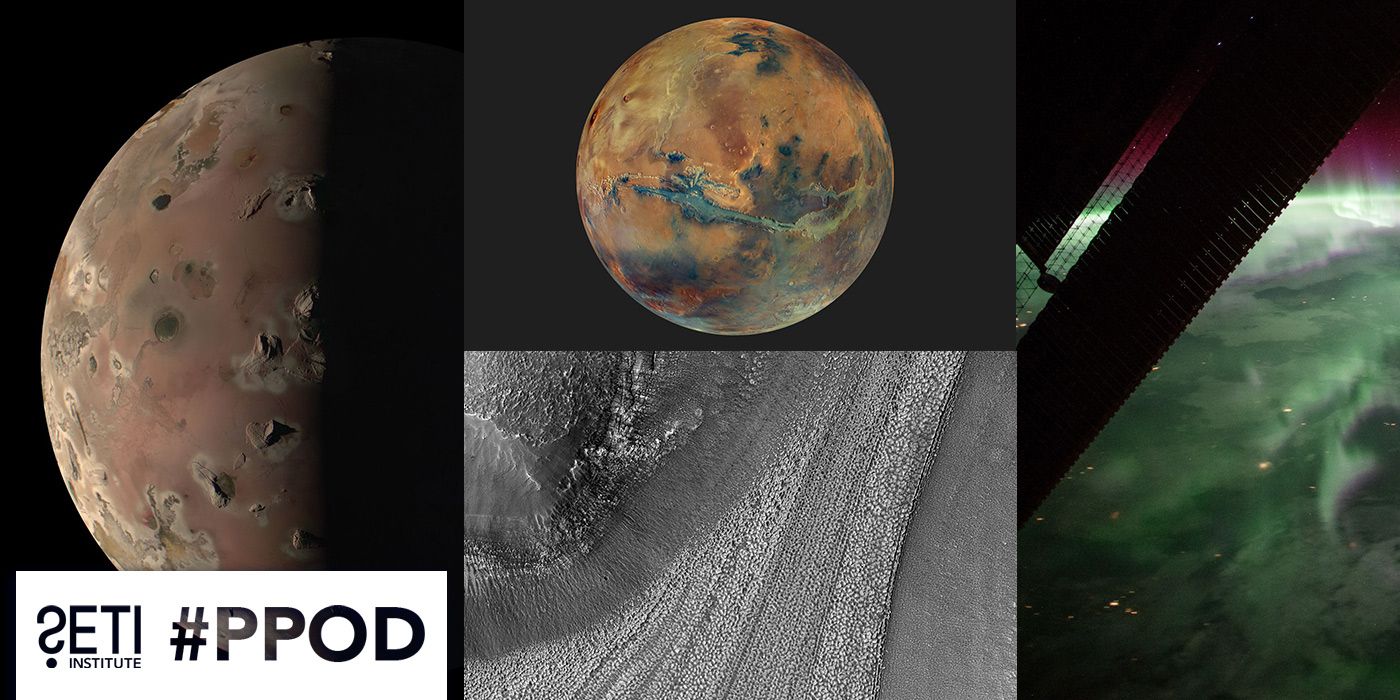
Planetary Picture of the Day
Week of January 2, 2024
Mars, Io, and some festive Northern Lights here on Earth.
Tuesday, January 2, 2024
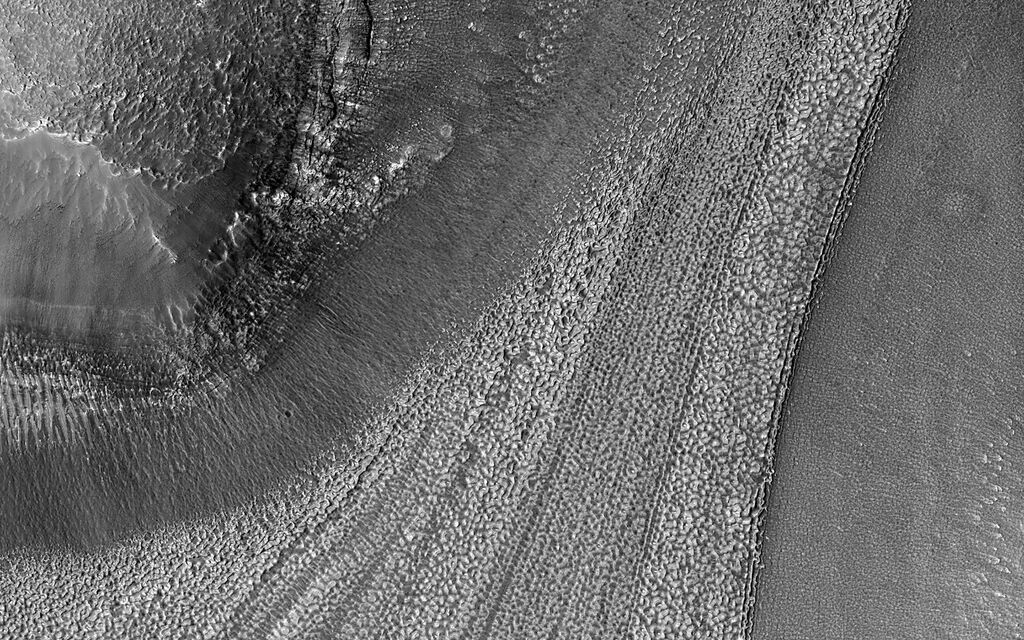
Ice Flows on Mars
The surface of Mars is littered with examples of glacier-like landforms. While surface ice deposits are mostly limited to the polar caps, patterns of slow, viscous flow abound in many non-polar regions of Mars. Streamlines that appear as linear ridges in the surface soils and rocky debris are often exposed on top of infilling deposits that coat crater and valley floors. We see such patterns on the surfaces of Earth's icy glaciers and debris-covered "rock glaciers." As ice flows downhill, rock and soil are plucked from the surrounding landscape and ferried along the flowing ice surface and within the icy subsurface. While this process is gradual, taking perhaps thousands of years or longer, it creates a network of linear patterns that reveal the history of ice flow.
Wednesday, January 3, 2024
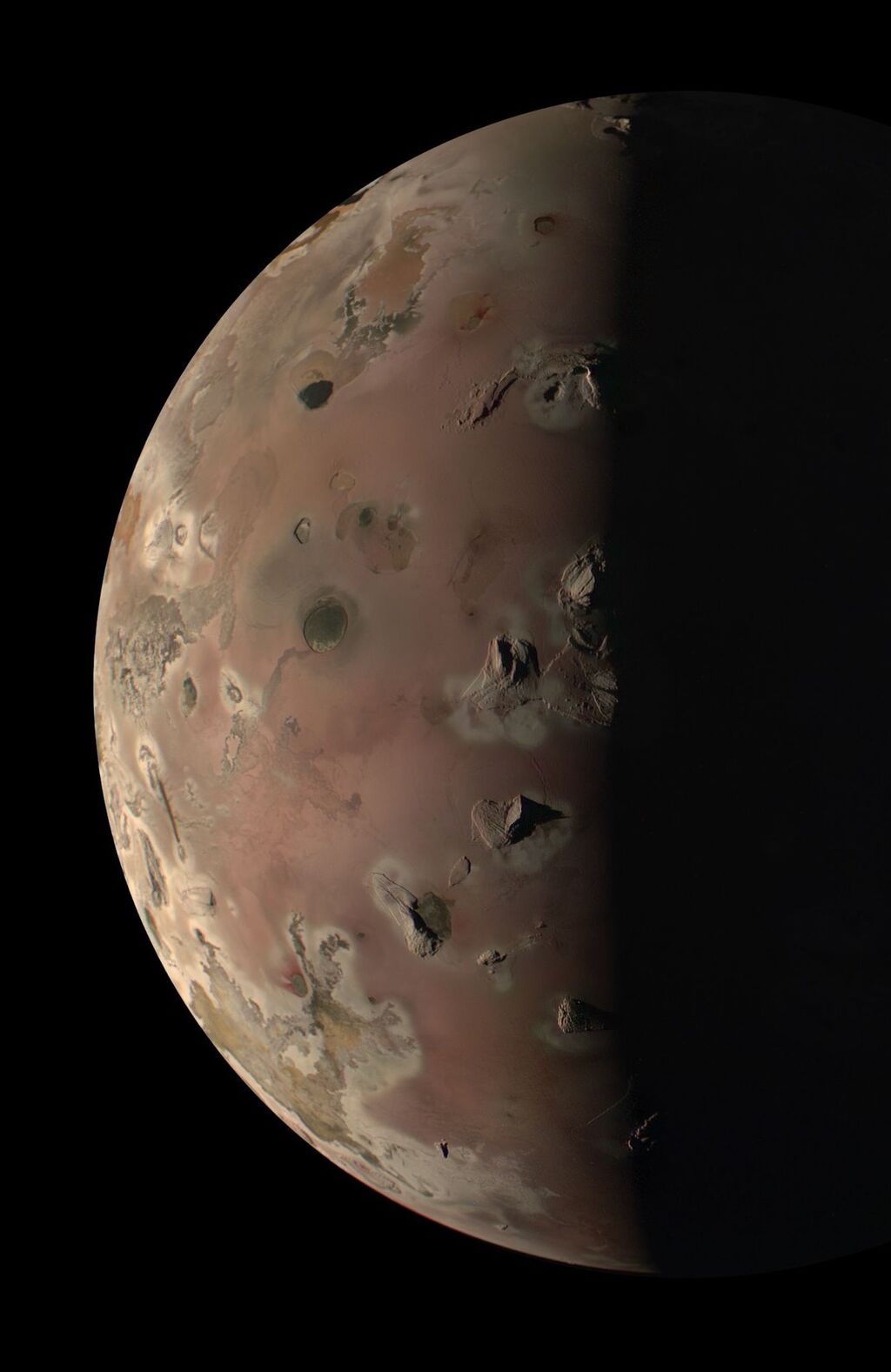
Wallpaper Io
Amazing new images of Jupiter's moon Io have come down from NASA's Juno spacecraft! This one shows the volcanic world from only 2,800 kilometers away, which is the closest look we’ve gotten of Io in over 20 years of missions.
Thursday, January 4, 2024
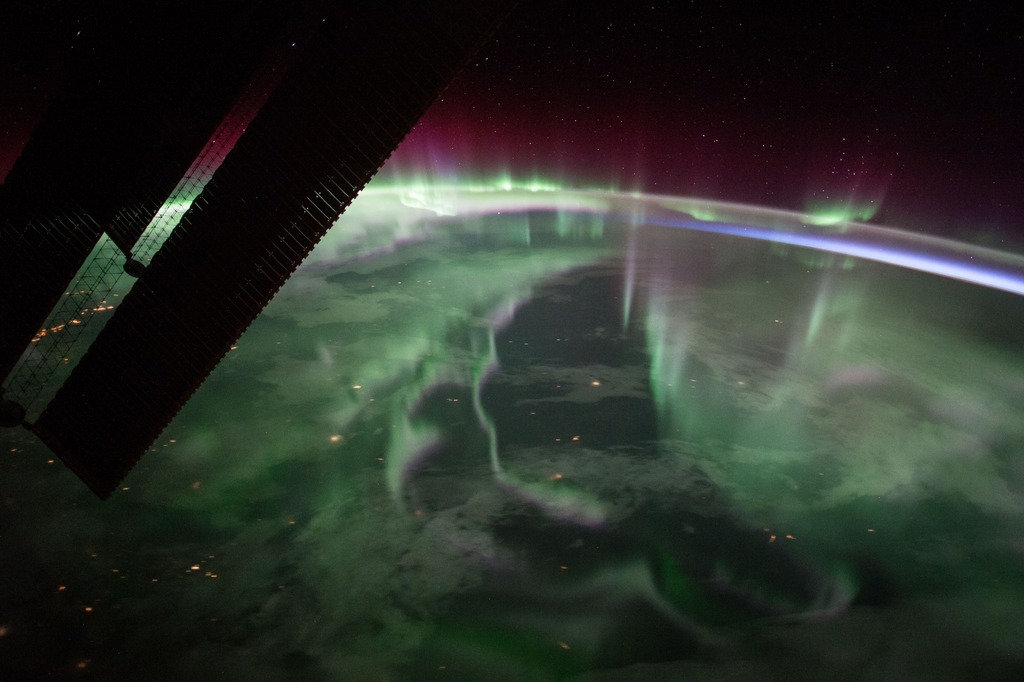
Festive Northern Lights
The spectacular aurora borealis, or the “northern lights,” over Canada is sighted from the space station near the highest point of its orbital path. The station’s main solar arrays are seen in the left foreground.
Friday, January 5, 2024
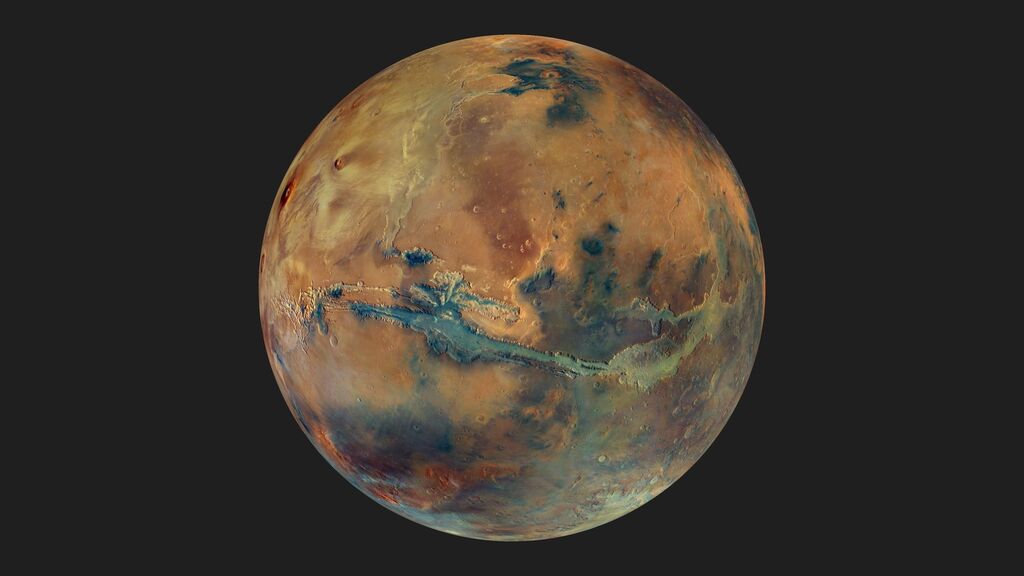
Global Mars in Color
To mark 20 years of ESA’s Mars Express, the High Resolution Stereo Camera (HRSC) team produced a global colour mosaic: Mars as never seen before. The mosaic reveals the planet’s surface colour and composition in spectacular detail.
Reliably determining accurate surface colours from orbit is difficult due to the variable amounts of dust in Mars’s atmosphere, leading to many mosaic images taking on a patchwork-like appearance; suppressing this effect in image processing usually reduces variations in colour between different parts of Mars. However, to create this mosaic, the HRSC team instead colour-referenced each constituent image using a colour model derived from high altitude imagery, allowing them to preserve colour variations and reveal a far richer colour view of Mars than has been seen before.
This is a simulated view of Mars from a vantage point 2500 km above the colossal Valles Marineris canyon system, with enhanced colour and contrast (at this relatively low altitude, the planet’s polar caps are not visible). It is a composite of red, green and blue filter mosaics with the colour band values stretched individually, and has a spatial resolution of 2 km per pixel (although higher resolution data products are possible and already in the works).
Darker grey-toned areas of Mars represent grey-black basaltic sands of volcanic origin; lighter patches show clay and sulphate minerals; and the large scar across the planet's face is Valles Marineris.





